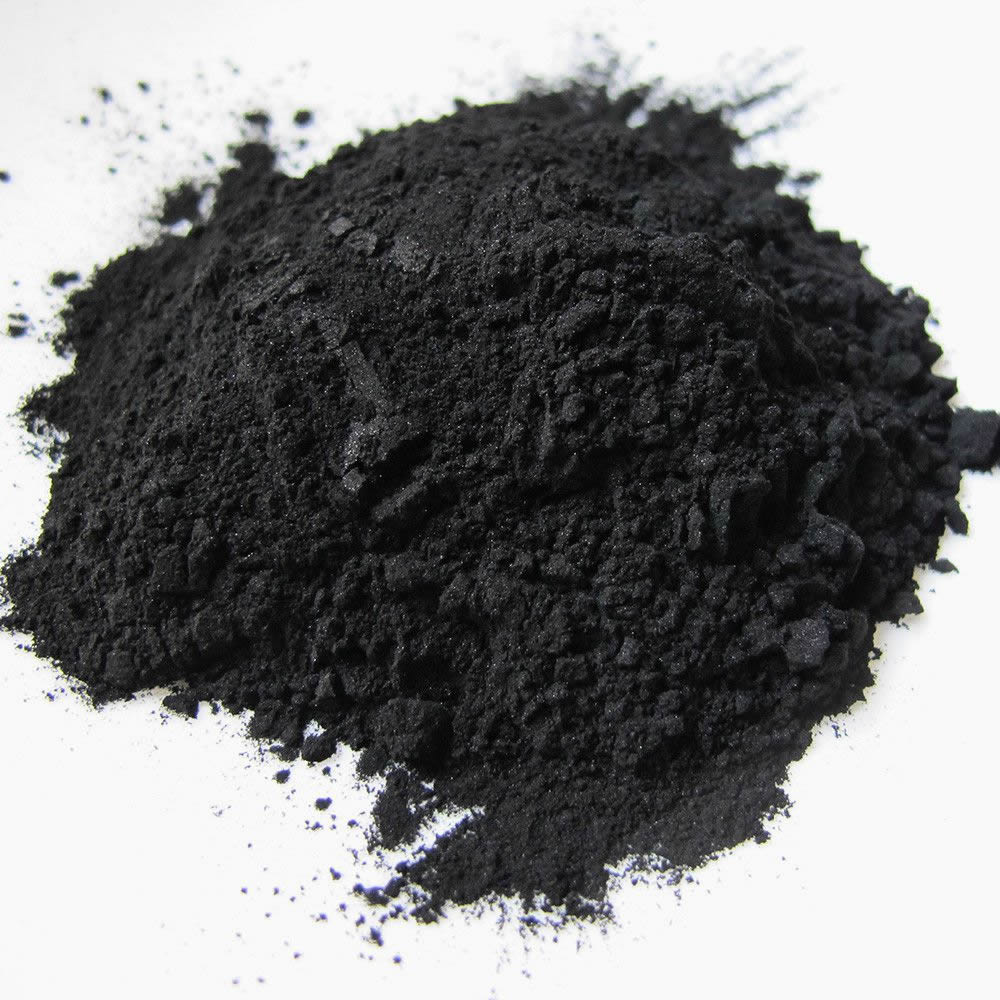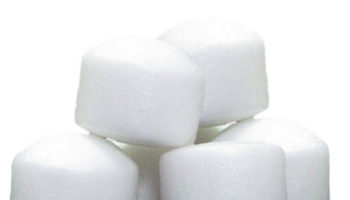Contents
What is activated charcoal
Activated charcoal also called activated carbon, is a form of carbon processed to have small, low-volume pores that increase the surface area available for adsorption or chemical reactions. Activated charcoal main uses are in air purification, decaffeination, gold purification, metal extraction, water purification, medicine, sewage treatment, air filters in gas masks and respirators, filters in compressed air and many other applications. One major industrial application involves use of activated charcoal in the metal finishing field. It is very widely employed for purification of electroplating solutions. For example, it is a main purification technique for removing organic impurities from bright nickel plating solutions. A variety of organic chemicals are added to plating solutions for improving their deposit qualities and for enhancing properties like brightness, smoothness, ductility, etc. Due to passage of direct current and electrolytic reactions of anodic oxidation and cathodic reduction, organic additives generate unwanted breakdown products in solution. Their excessive build up can adversely affect the plating quality and physical properties of deposited metal. Activated charcoal treatment removes such impurities and restores plating performance to the desired level.
Activated charcoal is also used in the emergency treatment of certain kinds of poisoning and overdoses following oral ingestion. Activated charcoal tablets and capsules are also used in many countries as an over-the-counter drug to treat diarrhea, indigestion, and flatulence, even though there is insufficient evidence of the benefits and efficacy for these applications.
Activated charcoal helps prevent the poison from being absorbed from the stomach into the body 1. Sometimes, several doses of activated charcoal are needed to treat severe poisoning. Activated charcoal is good at trapping chemicals and prevents their absorption. However, based on volunteer studies by the American Academy of Clinical Toxicology and European Association of Poisons Centres and Clinical Toxicologists 2, single-dose activated charcoal should not be administered routinely in the management of poisoned patients. In volunteer studies, using at least 50 g of activated charcoal, demonstrated that the effectiveness of activated charcoal decreases with time. Data showed a mean reduction in absorption of 47.3%, 40.07%, 16.5% and 21.13%, when activated charcoal was administered at 30 minutes, 60 minutes, 120 minutes and 180 minutes, respectively, after dosing. Furthermore, the poison must be known to be adsorbed to charcoal and must have been swallowed under one hour previously. Furthermore, activated charcoal should not be administered unless a patient has an intact or protected airway.
Ordinarily, this medicine is not effective and should not be used in poisoning if corrosive agents such as alkalis (lye) and strong acids, iron, boric acid, lithium, petroleum products (e.g., cleaning fluid, coal oil, fuel oil, gasoline, kerosene, paint thinner), or alcohols have been swallowed, since it will not prevent these poisons from being absorbed into the body 1.
Some activated charcoal products contain sorbitol. Sorbitol is a sweetener. It also works as a laxative, for the elimination of the poison from the body.Products that contain sorbitol should be given only under the direct supervision of a doctor because severe diarrhea and vomiting may result.
Activated charcoal has not been shown to be effective in relieving diarrhea and intestinal gas 1.
Activated charcoal may be available without a doctor’s prescription; however, before using activated charcoal, call a poison control center, your doctor, or an emergency room for advice.
This product is available in the following dosage forms:
- Liquid
- Suspension
- Tablet
- Tablet, Chewable
- Kit
- Powder for Suspension.
An adequate airway assessment must take place before administration of activated charcoal. In patients with a depressed level of consciousness, doctors must consider the risk-to-benefit ratio of intubation for airway protection and the therapeutic benefits of activated charcoal.
Aspiration pneumonitis can occur after vomiting in patients with a depressed level of consciousness and in those who are fully alert with intact airway reflexes. Aspiration from vomit and misplaced nasogastric tubes for activated charcoal administration have led to severe respiratory compromise and even death.
Vomiting occurs more often when activated charcoal is administered rapidly. The risk of vomiting increases when sorbitol is added to activated charcoal.
Patients should be monitored for mental status changes and continued protection of their airway if vomiting occurs. Your doctor should perform serial abdominal examinations to evaluate for signs of obstruction, or peritonitis, especially if multiple-dose activated charcoal is given.
Activated charcoal has listed drug interactions for leflunomide and teriflunomide as risk category D (consideration of therapy modification) due to decreased systemic absorption of these drugs.
No significant toxicity from activated charcoal exists as it is not systemically absorbed, however, adverse effects from the administration as listed above such as emesis, aspiration, and bowel obstruction requiring manual, or surgical decompression can occur.
How to activated charcoal is made
Common charcoal is made from peat, coal, wood, coconut shell, or petroleum. “Activated charcoal” is similar to common charcoal, but is made especially for use as a medicine. To make activated charcoal, manufacturers heat common charcoal in the presence of a gas that causes the charcoal to develop lots of internal spaces or “pores.” These pores help activated charcoal “trap” chemicals.
What does activated charcoal do?
Activated charcoal adsorbs xenobiotics (synthetic chemicals) within the gastrointestinal tract due to hydrogen bonding, ion-ion forces, and van der Waals forces 3. The activated charcoal/xenobiotic complex prevents systemic absorption of that xenobiotic. Activated charcoal only adsorbs xenobiotics that are in the dissolved liquid phase via direct contact. Orally administered activated charcoal is not absorbed through the gastrointestinal lumen and acts within the gastrointestinal (GI) tract in its unchanged form.
Xenobiotics (synthetic chemicals) come in contact with activated charcoal if the drug has not yet been absorbed from the gastrointestinal lumen, or via recirculation of the xenobiotic into the gut lumen by either enterohepatic recirculation, or entero-enteric recirculation through active secretion, or passive diffusion.
Activated charcoal adsorption of xenobiotics is based on the equilibrium between the free xenobiotic and the activated charcoal/xenobiotic complex. Desorption of the xenobiotic from activated charcoal may occur. However, in the presence of adequate doses of activated charcoal, the equilibrium is shifted towards the activated charcoal/xenobiotic complex. This attempt to shift the equilibrium in favor of activated charcoal/xenobiotic complexes is the rationale for dosing activated charcoal to an activated charcoal: the xenobiotic ratio of 10:1.
Activated charcoal best adsorbs xenobiotics in their nonionized forms. Polar, water-soluble molecules are less likely to be adsorbed. Due to the pharmacodynamics of activated charcoal, nonpolar, poorly water-soluble organic xenobiotics are best absorbed.
Most xenobiotics will have decreased systemic absorption in the presence of activated charcoal, including acetaminophen, aspirin, barbiturates, tricyclic antidepressants, theophylline, phenytoin, and a majority of inorganic and organic materials. It is important to note that activated charcoal does not effectively adsorb alcohols, metals such as iron and lithium, electrolytes such as magnesium, potassium, or sodium, and acids or alkalis due to the polarity of these substances.
Before Using Activated Charcoal
Allergies
Tell your doctor if you have ever had any unusual or allergic reaction to medicines in this group or any other medicines. Also tell your health care professional if you have any other types of allergies, such as to foods dyes, preservatives, or animals. For non-prescription products, read the label or package ingredients carefully.
Pediatric
Activated charcoal should be used only under the direct supervision of your doctor, poison control center, or other health care professional 4.
Geriatric
Many medicines have not been studied specifically in older people. Therefore, it may not be known whether they work exactly the same way they do in younger adults. Although there is no specific information comparing the use of activated charcoal in the elderly, this medicine is not expected to cause different side effects or problems in older people than it does in younger adults.
However, elderly persons with slow digestion are more likely to develop constipation if given more than one dose of activated charcoal.
Pregnancy
Activated charcoal has not been reported to cause birth defects or other problems in humans.
Breastfeeding
Activated charcoal has not been reported to cause problems in nursing babies.
Drug Interactions
Although certain medicines should not be used together at all, in other cases two different medicines may be used together even if an interaction might occur. In these cases, your doctor may want to change the dose, or other precautions may be necessary. When you are taking any of these medicines, it is especially important that your healthcare professional know if you are taking any of the medicines listed below. The following interactions have been selected on the basis of their potential significance and are not necessarily all-inclusive.
Activated charcoal absorbs substances in the stomach and intestines. Taking activated charcoal along with medications taken by mouth can decrease how much medicine your body absorbs, and decrease the effectiveness of your medication. To prevent this interaction, take activated charcoal at least one hour after medications you take by mouth.
Using medicines in this class with any of the following medicines is not recommended. Your doctor may decide not to treat you with a medication in this class or change some of the other medicines you take.
- Naltrexone
Using medicines in this class with any of the following medicines is usually not recommended, but may be required in some cases. If both medicines are prescribed together, your doctor may change the dose or how often you use one or both of the medicines.
- Bromazepam
- Bromopride
- Buprenorphine
- Bupropion
- Butorphanol
- Carbinoxamine
- Codeine
- Digoxin
- Dihydrocodeine
- Donepezil
- Doxylamine
- Fentanyl
- Flibanserin
- Hydrocodone
- Lorazepam
- Meclizine
- Meperidine
- Methadone
- Morphine
- Morphine Sulfate Liposome
- Mycophenolate Mofetil
- Mycophenolic Acid
- Oxycodone
- Oxymorphone
- Pentazocine
- Periciazine
- Remifentanil
- Sufentanil
- Tapentadol
- Tiotropium
- Tramadol
- Zolpidem
Other Interactions
Certain medicines should not be used at or around the time of eating food or eating certain types of food since interactions may occur. Using alcohol or tobacco with certain medicines may also cause interactions to occur. Discuss with your healthcare professional the use of your medicine with food, alcohol, or tobacco.
Alcohol (Ethanol)
Alcohol may make activated charcoal less effective in “trapping” poisons and other chemicals.
Activated charcoal is sometimes used to prevent poisons from being absorbed into the body. Taking alcohol with activated charcoal might decrease how well activated charcoal works to prevent poison absorption.
Syrup of ipecac
Activated charcoal can bind up syrup of ipecac in the stomach. This decreases the effectiveness of syrup of ipecac.
Other Medical Problems
The presence of other medical problems may affect the use of medicines in this class. Make sure you tell your doctor if you have any other medical problems, especially:
- Bleeding, intestinal or
- Blockage, intestinal or
- Hole in the intestine—Activated charcoal may make these conditions worse.
Don’t use activated charcoal if you have any kind of intestinal obstruction !
Also, if you have a condition that slows the passage of food through your intestine (reduced peristalsis), don’t use activated charcoal, unless you are being monitored by your healthcare provider.
Decreased alertness—To prevent activated charcoal from getting into the patient’s lungs, it may be necessary to place a tube in the patient’s throat before activated charcoal is given.
Dehydration—Use of laxatives, such as sorbitol, is not recommended.
Slow digestion—Activated charcoal may not work properly.
Surgery, recent—Activated charcoal may cause abdominal or stomach problems.
Activated charcoal contraindications
A position statement from the American Academy of Clinical Toxicology (AACT) in 2005 lists the following as contraindications and relative contraindications for activated charcoal use:
- Patients with an unprotected airway (in other words, a depressed level of consciousness) without endotracheal intubation
- If activated charcoal use is likely to increase the risk and severity of aspiration of a xenobiotic (hydrocarbons with high aspiration potentials)
- When the risk of gastrointestinal perforation or hemorrhage is high secondary to medical conditions or recent surgery
- When endoscopy is likely to be attempted as activated charcoal may obscure endoscopic visualization
- In the presence of an intestinal obstruction
- When activated charcoal is known to not meaningfully adsorb the ingested xenobiotic such as metals, acids, alkalis, electrolytes, or alcohols
Multiple-dose activated charcoal (MDAC) is relatively contraindicated if decreased peristalsis is likely to occur from the substance ingested (opioids or anticholinergics). If multiple-dose activated charcoal (MDAC) is given to these patients, they should be monitored closely for development of obstruction, or potential aspiration.
Activated charcoal uses
An oral suspension of activated charcoal should be considered in poisonings when gastrointestinal decontamination of a synthetic chemical that is foreign to the body is indicated, and activated charcoal can be administered within 1 hour of ingestion 3. Careful consideration of the contraindications (see above) should occur prior to treatment with activated charcoal 5.
Activated charcoal is used to 6:
- treat poisonings,
- reduce intestinal gas (flatulence),
- lower cholesterol levels,
- prevent hangover, and
- treat bile flow problems (cholestasis) during pregnancy.
Before taking this medicine, call a poison control center, your doctor, or an emergency room for advice. It is a good idea to have these telephone numbers readily available.
Observational trial data in recent years suggests activated charcoal should be given and may substantially reduce drug absorption and bioavailability in the following circumstances:
- In anticipation of serious toxicity
- Recent toxic ingestions. While the timeframe of less than 1 hour is classically described, activated charcoal administration may be beneficial if administered up to 4 hours after large ingestions and for the ingestion of substances with anticholinergic, or opioid properties that decrease intestinal motility
- In alert and cooperative patients
- When airway reflexes are intact, or the airway is protected by an endotracheal tube
- Ingestions of xenobiotics without specific antidotes
- When the ability to administer activated charcoal at activated charcoal: drug ratios is greater than 40:1. While an activated charcoal: drug ratio of 10:1 was previously thought to be ideal, recent studies suggest a ratio of 40:1 may be more beneficial. This ratio may be difficult to achieve in ingestions of a large drug mass at initial doses of activated charcoal are typically 25 to 100 g, and the risk of emesis increases as the amount of activated charcoal administered increases.
- Ingestion of delayed release drugs. Single-dose activated charcoal may be efficacious outside of a 1-hour time frame when the systemic absorption of modified release substances is delayed.
Activated charcoal can be given for substances known to be adsorbed by activated charcoal.
Multi-dose activated charcoal is often considered in cases of life-threatening ingestions of carbamazepine, dapsone, phenobarbital, quinine, and theophylline. Additional indications for possible multi-dose activated charcoal therapy are listed below.
To prevent activated charcoal powder from scattering, be careful when opening and adding water to the powder container.
It is very important that you shake the liquid form of this medicine well before taking it, because some might have settled in the bottom. Be sure to drink all the liquid. Then rinse the container with a small amount of water, shake the container, and drink this mixture to get the full dose of activated charcoal.
If you have been told to take both this medicine and ipecac syrup to treat the poisoning, do not take this medicine until after you have taken the ipecac syrup to cause vomiting and the vomiting has stopped. This usually takes about 30 minutes.
Do not take this medicine mixed with chocolate syrup, ice cream or sherbet, since they may prevent the medicine from working properly.
If you are taking any other medicine, do not take it within 2 hours of the activated charcoal. Taking other medicines together with activated charcoal may prevent the other medicine from being absorbed by your body. If you have any questions about this, check with your health care professional.
Activated charcoal by other names
Activated Carbon, Animal Charcoal, Carbo Vegetabilis, Carbon, Carbón Activado, Charbon Actif, Charbon Activé, Charbon Animal, Charbon Médicinal, Charbon Végétal, Charbon Végétal Activé, Charcoal, Gas Black, Lamp Black, Medicinal Charcoal, Noir de Gaz, Noir de Lampe, Vegetable Carbon, Vegetable Charcoal.
US Brand Name
- Actidose-Aqua
- Charcoal
- Diarrest
- Di-Gon II
- Donnagel
- EZ-Char
- Kaodene NN
- Kaolinpec
- Kaopectate
- Kaopek
- Kerr Insta-Char
Canadian Brand Name
- Aqueous Charcodote Adult
- Aqueous Charcodote Pediatric
- Charcodote
- Charcodote Pediatric
- Charcodote Tfs
- Charcodote Tfs Pediatric
- Donnagel-Mb
- Kao-Con
- Parepectolin.
How effective is activated charcoal
Likely effective for:
- Trapping chemicals to stop some types of poisoning when used as a part of standard treatment.
Insufficient evidence to rate effectiveness for:
- Lowering cholesterol levels. So far, research studies don’t agree about the effectiveness of taking activated charcoal by mouth to lower cholesterol levels in the blood.
- Decreasing gas (flatulence). Some studies show that activated charcoal is effective in reducing intestinal gas, but other studies don’t agree. It’s too early to come to a conclusion on this.
- Treating reduced bile flow (cholestasis) during pregnancy. Taking activated charcoal by mouth seems to help treat cholestasis in pregnancy, according to some early research reports.
- Preventing hangover. Activated charcoal is included in some hangover remedies, but some experts are skeptical about how well it might work. Activated charcoal doesn’t seem to trap alcohol well.
- Other conditions.
More evidence is needed to rate the effectiveness of activated charcoal for these uses.
Activated charcoal dosage
Activated charcoal should be administered when a synthetic chemical is believed to still be in the gastrointestinal tract and when the benefits of preventing absorption of the synthetic chemical are assumed to outweigh the risks of activated charcoal. Optimal dosing of activated charcoal is unknown. activated charcoal can be administered orally, or via nasogastric and orogastric tubes. When the dose of the synthetic chemical is known, experts recommend activated charcoal at a 10:1 ratio of activated charcoal:xenobiotic. This may be impractical to achieve a 10:1 ratio when large doses (APAP or salicylates) are ingested. When the amount of xenobiotic ingested is unknown, or it is impractical to achieve a 10:1 ratio in large dose xenobiotic ingestions, single-dose activated charcoal should be administered in doses of 1g/kg of body weight.
Single-dose activated charcoal can either be given as a 1 g/kg of body weight dose, or simplified age-based dosing below:
- Single-dose activated charcoal dosing adult: 25 to 100 g
- Single-dose activated charcoal dosing infants younger than 1 year: 10 to 25 g
- Single-dose activated charcoal children 2 to 12 years: 25 to 50 g
- Single-dose activated charcoal children older than 12 years: follow adult dosing
Multiple-dose activated charcoal is used when at least 2 sequential doses, and often several more, of activated charcoal, are given. multi-dose activated charcoal is believed to prevent ongoing absorption of drug remaining within the GI tract and enhance elimination via enterohepatic or entero-enteric recirculation. While the quality of clinical data is not robust, multi-dose activated charcoal is believed to be beneficial for “potentially life-threatening” ingestions of the following substances: carbamazepine, dapsone, phenobarbital, quinidine, theophylline, amitriptyline, dextropropoxyphene, digitoxin, digoxin, disopyramide, nadolol, phenylbutazone, phenytoin piroxicam, sotalol, amiodarone, dosulepin, duloxetine, lamotrigine, valproic acid, and verapamil.
Dosing strategies of multi-dose activated charcoal vary. An initial dose of 10:1 ratio of activated charcoal: xenobiotic or 1 g/kg of bodyweight activated charcoal can be administered. It is best to tailor the dose and dosing intervals of multi-dose activated charcoal to the amount and dosage form of xenobiotic ingested. Interval multi-dose activated charcoal doses range from 0.25 to 0.5 g/kg of body weight every 1 to 6 hours in adults. activated charcoal has also been continuously administered through an nasogastric tube in some cases.
A simplified multi-dose activated charcoal approach for adult patients would be:
- Loading dose of 25 to 100 g
- Repeat doses of 10 to 25 g activated charcoal every 2 to 4 hours
Due to the variability in proper dosing strategies and indications for multi-dose activated charcoal administration, it would be a reasonable approach to consult a regional toxicologist, or Poison Control Center before the initiation of multi-dose activated charcoal therapy.
Formulations have been attempted to increase the palatability of activated charcoal which comes in a black color and has a gritty texture. Ready-to-use aqueous suspensions of activated charcoal are available in 15 g, 25 g, and 50 g doses as well as formulations premixed with sorbitol. If activated charcoal is not premixed, a slurry can be made with activated charcoal in a 1:8 ratio of activated charcoal to a suitable liquid such as water, cola, or flavored syrups. Offering activated charcoal in an opaque cup with a lid and straw is an easy way to increase the palatability of activated charcoal.
Dosing
The dose medicines in this class will be different for different patients. Follow your doctor’s orders or the directions on the label. The following information includes only the average doses of these medicines. If your dose is different, do not change it unless your doctor tells you to do so.
The amount of medicine that you take depends on the strength of the medicine. Also, the number of doses you take each day, the time allowed between doses, and the length of time you take the medicine depend on the medical problem for which you are using the medicine.
For activated charcoal
- —For oral dosage form (powder):
- For treatment of poisoning:
- Treatment with one dose:
- Adults and teenagers—Dose is usually 25 to 100 grams mixed with water.
- Children 1 through 12 years of age—Dose is usually 25 to 50 grams mixed with water, or the dose may be based on body weight. It may be 0.5 to 1 gram per kilogram (kg) (0.23 to 0.45 gram per pound) of body weight mixed with water.
- Children up to 1 year of age—Dose is usually 10 to 25 grams mixed with water, or the dose may be based on body weight. It may be 0.5 to 1 gram per kg (0.23 to 0.45 gram per pound) of body weight mixed with water.
- Treatment with more than one dose:
- Adults and teenagers—At first, the dose is 50 to 100 grams. Then the dose may be 12.5 grams given every hour, 25 grams given every two hours, or 50 grams given every four hours. Each dose should be mixed with water.
- Children up to 13 years of age—At first, the dose is 10 to 25 grams. Then the dose is based on body weight. It is usually 1 to 2 grams per kg (0.45 to 0.91 gram per pound) of body weight given every two to four hours. Each dose should be mixed with water.
- Treatment with one dose:
- For treatment of poisoning:
- —For oral dosage form (oral suspension):
- For treatment of poisoning:
- Treatment with one dose:
- Adults and teenagers—Dose is usually 25 to 100 grams.
- Children 1 through 12 years of age—Dose is usually 25 to 50 grams, or the dose may be based on body weight. It may be 0.5 to 1 gram per kg (0.23 to 0.45 gram per pound) of body weight.
- Children up to 1 year of age—Dose is usually 10 to 25 grams, or the dose may be based on body weight. It may be 0.5 to 1 gram per kg (0.23 to 0.45 gram per pound) of body weight.
- Treatment with more than one dose:
- Adults and teenagers—At first, the dose is 50 to 100 grams. Then the dose may be 12.5 grams given every hour, 25 grams given every two hours, or 50 grams given every four hours.
- Children up to 13 years of age—At first, the dose is 10 to 25 grams. Then the dose is based on body weight. It is usually 1 to 2 grams per kg (0.45 to 0.91 gram per pound) of body weight given every two to four hours.
- Treatment with one dose:
- For treatment of poisoning:
For activated charcoal and sorbitol
- For oral dosage form (oral suspension):
- For treatment of poisoning:
- Adults and teenagers—Dose is usually 50 to 100 grams of activated charcoal given one time.
- Children 1 through 12 years of age—Dose is usually 25 to 50 grams of activated charcoal given one time.
- Children up to 1 year of age—Use is not recommended.
- For treatment of poisoning:
Storage
Keep out of the reach of children.
Store the medicine in a closed container at room temperature, away from heat, moisture, and direct light. Keep from freezing.
Do not keep outdated medicine or medicine no longer needed.
Activated charcoal side effects
Along with its needed effects, a medicine may cause some unwanted effects. Although not all of these side effects may occur, if they do occur they may need medical attention.
Activated charcoal is safe for most adults when used short-term. Side effects of activated charcoal include constipation and black stools. More serious, but rare, side effects are a slowing or blockage of the intestinal tract, regurgitation into the lungs, and dehydration.
Check with your doctor as soon as possible if any of the following side effects occur:
Less common or rare
- Pain or swelling in stomach
Other side effects may occur that usually do not need medical attention. These side effects may go away during treatment as your body adjusts to the medicine. However, check with your doctor if any of the following side effects continue:
More common
- Diarrhea
Less common or rare
- Constipation
- vomiting
Activated charcoal will cause your stools to turn black. This is to be expected while you are taking this medicine.
There have not been any other side effects reported with this medicine. However, if you notice any other effects, check with your doctor.
Activated charcoal paste/powder for teeth
Due to recent online marketer promoting the sale of activated charcoal gel and powder for dental uses, Brooks et al conducted a review 7 that appeared in the Journal of the American Dental Association. The authors search for clinical studies on the use of charcoal and charcoal-based dentifrices and laboratory investigations on the bioactivity or toxicity of charcoal and charcoal-based dentifrices. What they found was insufficient clinical and laboratory data to substantiate the safety and efficacy claims of charcoal and charcoal-based dentifrices 7. They also cautioned dental clinicians about advising their patients to be cautious when using charcoal and charcoal-based dentifrices with unproven claims of efficacy and safety.
Their last message was “caveat emptor”, which means “let the buyer beware”, particularly when dealing with unproven (safety and benefits) dental products e.g. charcoal toothpaste, charcoal chewing gum.
If you are interested to whiten your teeth and want a product that work see our other post on teeth whitening here: How to Whiten Teeth Naturally
- Charcoal, Activated (Oral Route). Mayo Clinic. https://www.mayoclinic.org/drugs-supplements/charcoal-activated-oral-route/description/drg-20070087[↩][↩][↩]
- Position Paper: Single-Dose Activated Charcoal. American Academy of Clinical Toxicology & European Association of Poisons Centres and Clinical Toxicologists. Clinical Toxicology Vol. 43, Iss.2,2005. http://www.tandfonline.com/doi/full/10.1081/CLT-51867[↩]
- Silberman J, Taylor A. Activated Charcoal. [Updated 2018 Nov 22]. In: StatPearls [Internet]. Treasure Island (FL): StatPearls Publishing; 2019 Jan-. Available from: https://www.ncbi.nlm.nih.gov/books/NBK482294[↩][↩]
- Charcoal, Activated (Oral Route). Mayo Clinic. https://www.mayoclinic.org/drugs-supplements/charcoal-activated-oral-route/before-using/drg-20070087[↩]
- Chiew AL, Gluud C, Brok J, Buckley NA. Interventions for paracetamol (acetaminophen) overdose. Cochrane Database Syst Rev. 2018 Feb 23;2:CD003328[↩]
- Activated Charcoal. Medline Plus. https://medlineplus.gov/druginfo/natural/269.html[↩]
- Charcoal and charcoal-based dentifrices. Brooks, John K. et al. The Journal of the American Dental Association , Volume 148 , Issue 9 , 661 – 670. http://jada.ada.org/article/S0002-8177(17)30412-9/fulltext[↩][↩]





